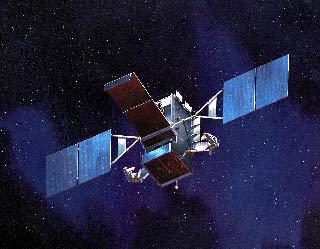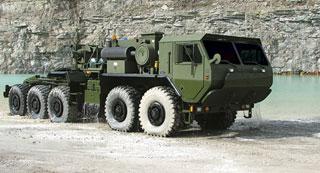
Space Based Infrared System (SBIRS). Photo: Lockheed Martin.
DENVER (BNS): The first Lockheed Martin-built Space Based Infrared System (SBIRS) geosynchronous (GEO-1) spacecraft has successfully reached its intended orbit and is performing as required following its successful May 7 launch from Cape Canaveral Air Force Station, Florida.
The SBIRS GEO-1 military infrared satellite was launched at 2.10 PM EDT aboard a United Launch Alliance Atlas V rocket.
After launch, the US Air Force (USAF) and Lockheed Martin SBIRS ground team executed a series of six Liquid Apogee Engine (LAE) burns to propel the spacecraft to its geosynchronous orbital slot.
"Successfully reaching orbit and conducting deployments is a tremendous milestone for the SBIRS GEO-1 spacecraft," Brig Gen (select) Roger W. Teague, the director of the U.S. Air Force’s Infrared Space Systems Directorate, was quoted as saying in the Lockheed Martin news release.
The satellite's solar arrays, light shade and antenna wing assemblies were deployed in preparation for activating its sophisticated infrared sensors and the start of early orbit testing, according to the news report.
SBIRS GEO-1 is the most technologically advanced military infrared satellite and will enhance early warning of missile launches around the globe, support the USAF's ballistic missile defense system, greatly expand technical intelligence gathering capability, and bolster situational awareness for warfighters on the battlefield.
SBIRS GEO-1 includes highly sophisticated scanning and staring sensors that will deliver improved infrared sensitivity and a reduction in area revisit times over the current constellation. The scanning sensor will provide a wide area surveillance of missile launches and natural phenomena across the earth, while the staring sensor will be used to observe smaller areas of interest with superior sensitivity.
The SBIRS team is led by the Infrared Space Systems Directorate at the US Air Force Space and Missile Systems Center. Lockheed Martin is the SBIRS prime contractor, with Northrop Grumman as the payload integrator. Air Force Space Command operates the SBIRS system.
 Previous Article
Previous Article Next Article
Next Article









The Indian Air Force, in its flight trials evaluation report submitted before the Defence Ministry l..
view articleAn insight into the Medium Multi-Role Combat Aircraft competition...
view articleSky enthusiasts can now spot the International Space Station (ISS) commanded by Indian-American astr..
view article